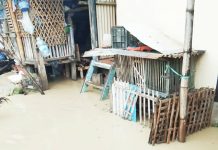ILOILO — Using previous years’ data and projections, the Iloilo Provincial Health Office (IPHO) estimates that dengue cases in this province could reach up to 21,254 with 65 deaths by the end of 2025.
In 2019, the province experienced its worst outbreak with over 22,000 cases and 78 deaths.
Dengue infections are once again on the rise, with nearly 2,000 cases and nine recorded deaths as of May 31, prompting renewed calls from health authorities for intensified anti-dengue efforts ahead of the expected peak in July and August.
According to the IPHO, the province recorded a 16 percent increase in dengue cases over a two-week period, with 166 new cases reported in the most recent monitoring compared to 143 cases in the previous weeks. This marks a reversal from earlier negative growth rates and signals the beginning of what could be a severe dengue season.
From January 1 to May 31, 2025, the province logged 1,959 dengue cases, a 78 percent increase from the 1,102 cases recorded during the same period last year. Deaths also rose from five in 2024 to nine this year.
Dengue is a mosquito-borne viral disease transmitted primarily by the Aedes aegypti and Aedes albopictus mosquito, which typically breeds in stagnant water found in containers and discarded trash. It is more prevalent during the rainy season, when mosquito populations increase.
“We are already seeing an uptick in cases. Based on our data and past trends, we expect cases to continue rising with the onset of the rainy season,” said Dr. Rodney Labis, head of the IPHO’s Health Service Delivery Division.
He warned that cases could peak in July and August, consistent with historical dengue patterns.
Common symptoms of dengue include: sudden high fever, severe headache, pain behind the eyes, muscle and joint pain, nausea or vomiting, and skin rashes. In some cases, bleeding from the nose or gums.
In severe cases, dengue can lead to hemorrhagic fever or dengue shock syndrome, both of which can be fatal without prompt medical intervention.
Gov. Arthur Defensor Jr. has directed all members of the Provincial Disaster Risk Reduction and Management Council (PDRRMC) to fully support provincial initiatives aimed at controlling the outbreak.
Among these efforts are the “Limpyo Iloilo nga Lihuk Kontra Lamok kada Lunes” campaign and participation in the Brigada Eskwela from June 9 to 13, focused on searching and destroying mosquito breeding sites in schools and communities.
The most affected age group remains those between one and 19 years old, prompting authorities to reiterate the importance of the 4S strategy: Search and destroy breeding sites, Seek early consultation, Self-protection measures, and Support fogging/spraying only in hotspot areas.
“The 4S strategy worked in the past, and we must do it again to protect our families from this deadly disease,” Labis said.
The municipalities with the highest number of cases are:
* San Joaquin (151)
* Oton (115, with one death)
* Leon (99)
* Cabatuan (95)
* Dumangas (91)
* Pototan (79, with two deaths)
* Lambunao (74)
* San Dionisio (67)
* Janiuay (63)
* Calinog (62)
Other areas reporting significant numbers include Sara (62, with one death), Ajuy (60), Pavia (57), Passi City (54), Maasin (51), Barotac Nuevo (46), Concepcion (44), Banate (43), Barotac Viejo (43), Santa Barbara (41), Tigbauan (40 cases with one death), Estancia (39), Miag-ao (37), San Miguel (36), Carles (31 cases with two deaths), San Rafael (31), Alimodian (27), Guimbal (27), Anilao (26), Batad (26), Badiangan (25), Dingle (24), Dueñas (24 cases with one death), Balasan (20), Mina (21), Igbaras (19), Zarraga (19), Lemery (18), Leganes (18), Bingawan (16), San Enrique (16), Tubungan (15), and New Lucena (seven).
Health authorities are urging all residents to take immediate preventive actions and remain vigilant as the rainy season progresses./PN





